Nothing Phone (2a) review: greater than the sum of its parts
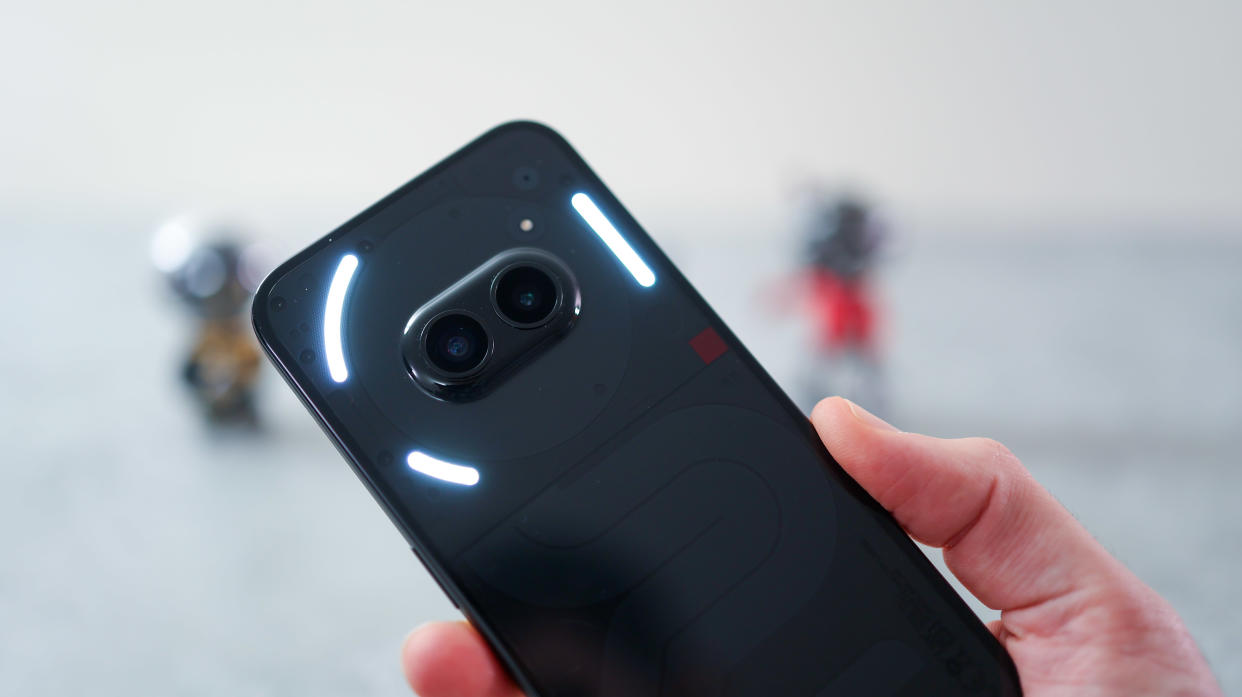
If you want a fun smartphone on a budget, the Nothing Phone (2a) could be a winner. Sitting beneath the Phone (2) in Nothing's roster, it combines a pared-back take on the firm's glyph lighting around the back – introduced on the Nothing Phone (1) – with the dot matrix UI that's been cooking at Nothing HQ over the last couple of years, matched with blippy ring tones aplenty and an iPhone-like silhouette.
The lowest-cost phone from the London-based firm, Nothing has cut back in a few areas beyond the glyph lights with the (2a). It misses out on wireless charging, a glass and metal design, and its camera specs are more modest than those of the Phone (1) and (2). Getting into a few specifics, it packs a Samsung sensor for the main camera, and the ultra-wide camera lens doesn't sport autofocus.
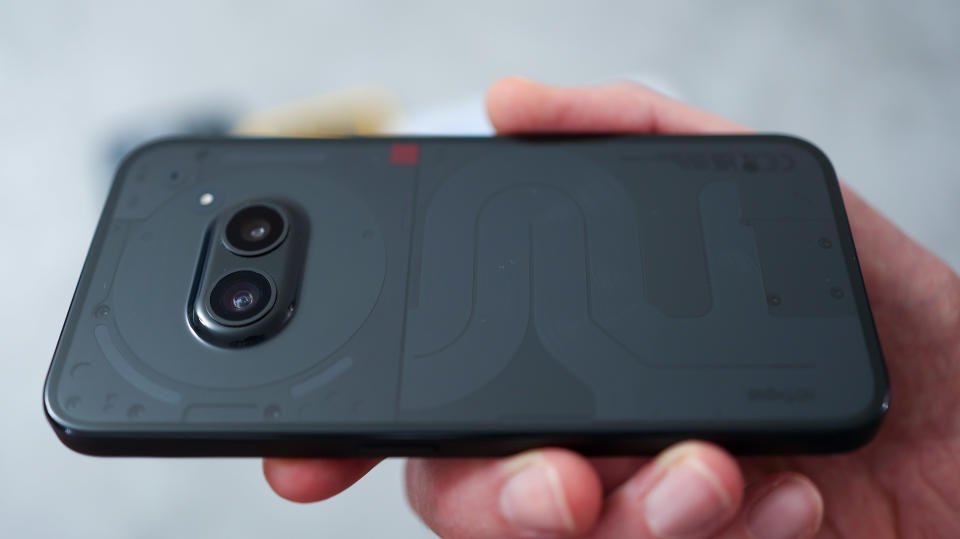
Squeezing in the biggest battery of any Nothing Phone to date, and still cramming two 50MP camera sensors and the freshest take on Nothing OS, can the Phone 2a outshine competition like the Google Pixel 7a and Motorola Edge 40 Neo despite its compromises?
Nothing Phone (2a) Design and Screen
Building on the transparent back styling of the original Nothing Phone (1), the new (2a) has a reduced number of glyph lights – three strips around the cameras – and the bottom half feels more like a design choice than a peek into the phone as was the case with its predecessors.
This time around, the frame and sides are plastic, not metal and glass, and this makes the Phone (2a) feel less fancy. When set alongside some of its key competition – the Google Pixel 7a and Motorola Edge 40 Neo – its weighting isn't as premium or balance in the hand.
If you don't mind the playful plastic styling, being plastic keeps the weight down. The Phone (2a) is a big phone with it's 6.7-inch screen, but at 194g, it's still comfortable to hold for long bouts.
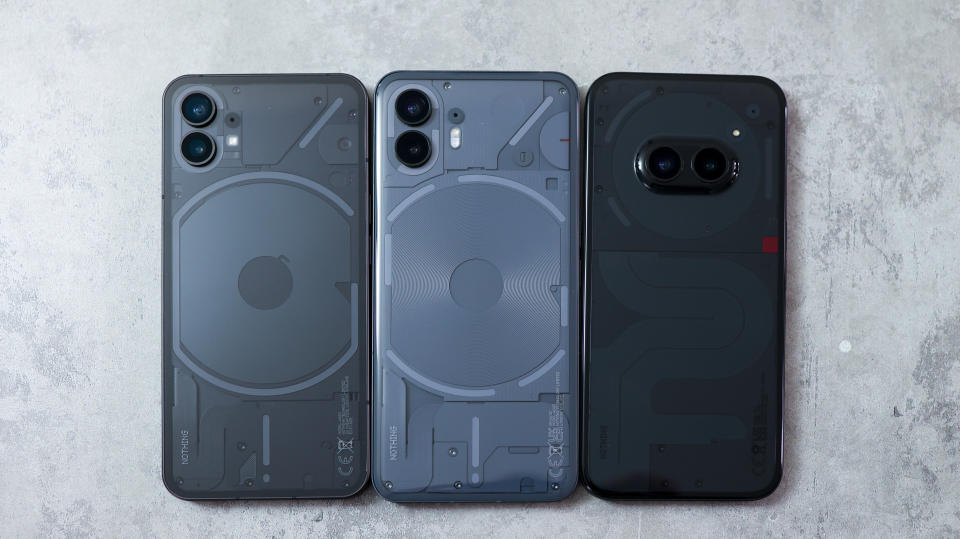
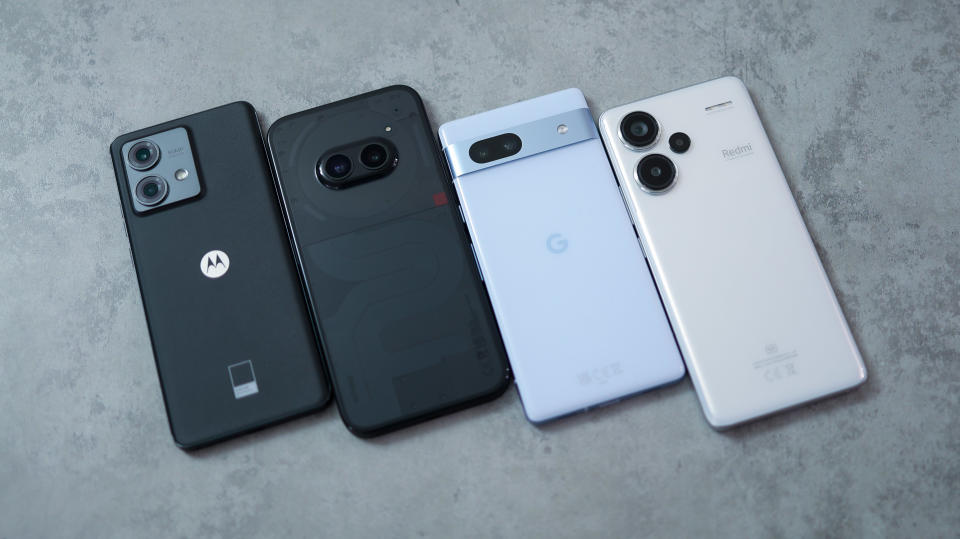
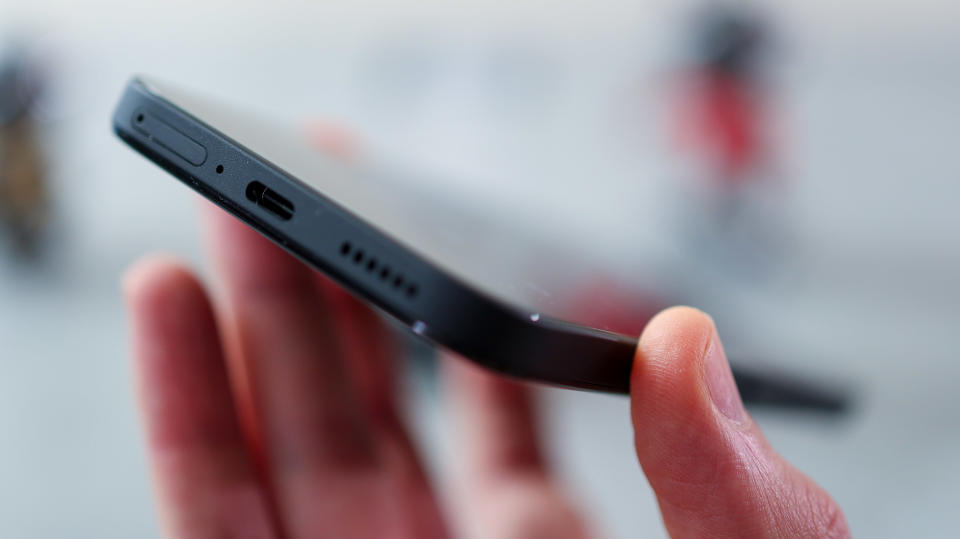
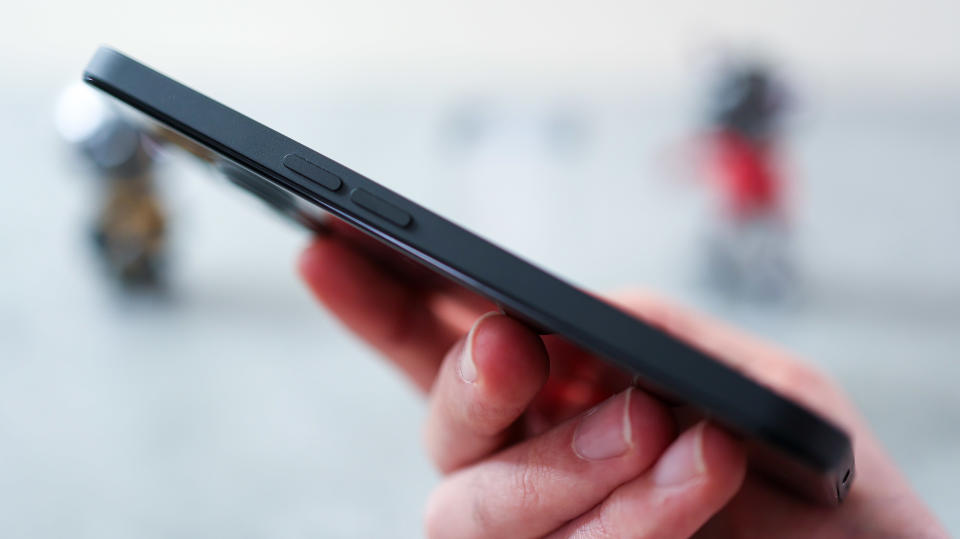
The back of the Phone (2a) curves slightly into the frame to make it sit a bit more softly in the hand, and the camera has been moved to the top center. This makes for a comfortable finger rest, however, wreaks havoc on ultra-wide photos, with our finger frequently photobombing shots.
Other Phone (2a) highlights include IP54 water and dust resistance, and the phone's mid-frame is made of 100 percent recycled aluminum, six circuit boards are made of 100 percent recycled tin, while the main circuit board uses 100 percent recycled copper foil. Additionally, over 50 percent of the plastic in the phone is sustainably sourced.
Of course, the phone's key differentiator from a style point of view is the glyph lighting, and it shines in a few scenarios. Obviously this includes notifications, but Nothing has also integrated an Uber timer so you can see a visual countdown for your ride, and you can customize a ringtone and lighting order, or choose between a host of preset options. It's fun and modestly useful, but as with all things Nothing Phone, the experience is greater than the sum of its parts.
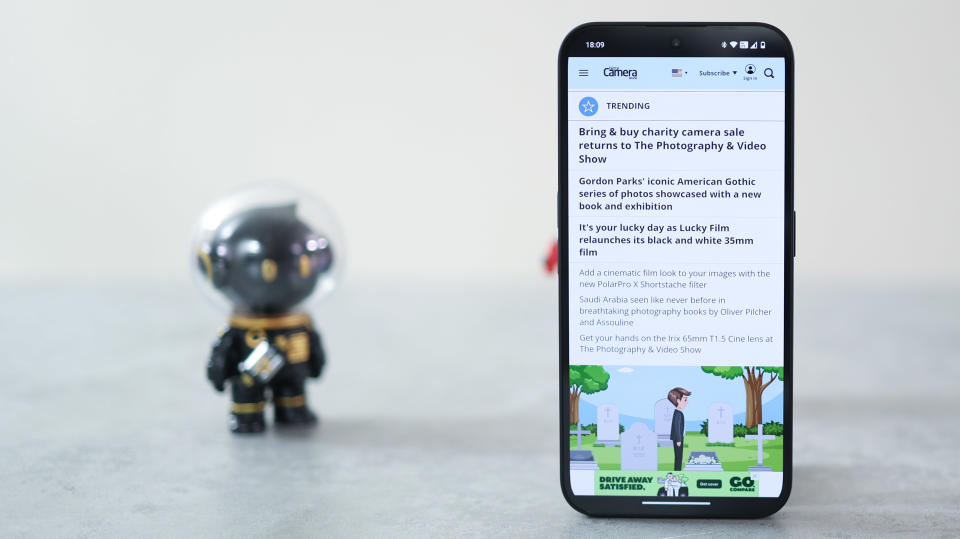
Available in Black and Cloud (white), while the black Phone (2a) is subtly transparent, only giving you a peek into its innards in certain lighting, the white one looks and feels more standout.
The Nothing Phone (2a)'s large 6.7-inch screen is a highlight. Its smooth 120Hz refresh rate ensures content glides across its zingy AMOLED pixels, and it beams at up to 700 nits in typical use. Outdoors, this number climbs to 1100 nits, so you should be able to make out what's on-screen in all but the sunniest environments.
With Full HD resolution of 1084 x 2412, the 394 pixel-per-inch pixel density means it's as sharp as it needs to be at the price, and with Gorilla Glass 5, it's relatively well protected too.
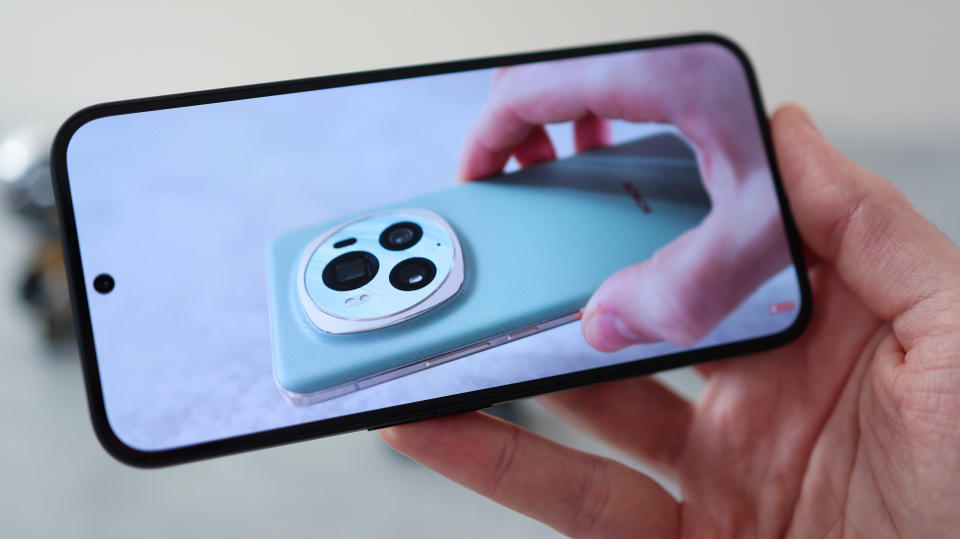
The Nothing Phone (2a) will really appeal to fans of big, flat screens. Its bezel might not be the slimmest, but by being uniform, it has a symmetry that anchors your content nicely, and its aspect ratio matched with the lack of curves means photo and video content looks great on it, and you won't get any warping at the edges or accidental touches.
We've been a little spoilt with the new Samsung Galaxy S24 Ultra's anti-glare display, and if you have a dark wallpaper and theme on your Nothing Phone (2a), you'll see a lot of reflections in its screen – both the phone's front and back are very shiny – but all things said and done, it's still a pleasure to use, especially given the price.
Nothing Phone (2a) Camera Specs
The Nothing Phone (2a)'s camera is a dual 50MP mix, consisting of a 14mm lens (0.6x zoom), and a 24mm lens (1x zoom).
14mm wide camera
We've championed Nothing phones for featuring a versatile dual-camera setup in the past, with ultra-wide cameras that pack autofocus for close-up macro shots, and a quality primary camera, but for the lower-cost (2a), Nothing has dropped the autofocusing ultra-wide, instead opting for a fixed-focus setup.
This move is unsurprising at the price, putting the ultra-wide in line with competing devices from Google, Motorola, and Xiaomi. The 1/2.76 aperture sensor is matched with an f/2.2 lens, which has an equivalent 114º field of view.
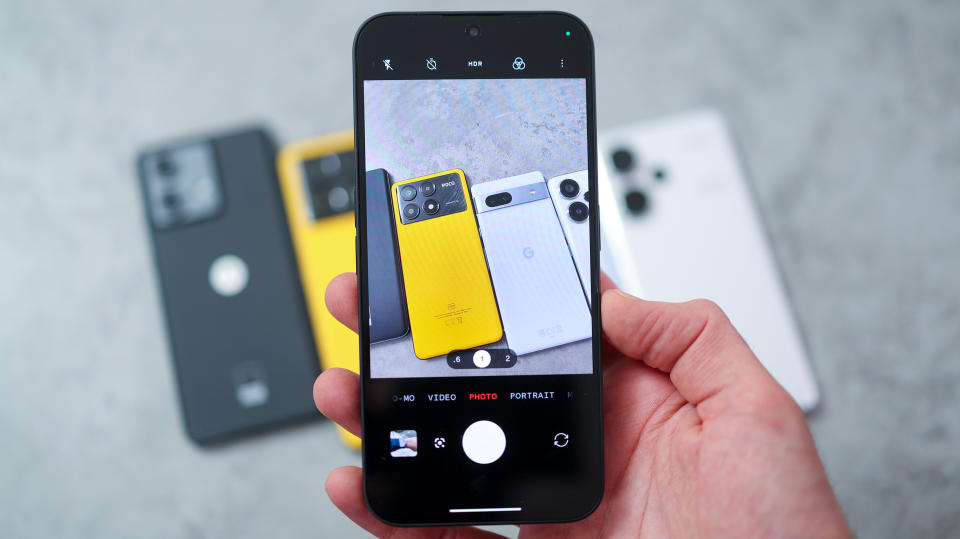
24mm telephoto camera
While past Nothing phones featured Sony primary camera sensors, the Phone (2a) has a 50MP Samsung sensor. This is the same 1/1.56-inch size as the IMX 890 of the Nothing Phone (2), but based on experience with other phones sporting it, isn't quite as sharp and doesn't deliver as refined an optical quality.
Packing OIS and EIS, as well as an f/1.88 aperture, the Phone (2a)'s main camera has plenty going for it on paper.
Other camera specs
Nothing includes a 32MP front camera on the Phone (2a). This is the same selfie module as the Nothing Phone (2), with an f/2.2 aperture and a 1/2.74-inch size.
Vloggers might be disappointed with the front camera capping out at 1080p, and video fans might be a bit miffed that the rear cameras can't capture 4K 60fps footage – both available on the (pricier) Pixel 7a. If you're happy with 1080p (60fps), 4K (30fps), though, the Phone (2a) delivers both.
Nothing Phone (2a) Camera Review
The Nothing Phone (2a) camera system is good without being standout. Bearing in mind the Pixel 7a's higher price, you can see in the examples below how its color-handling and zoom outperform the (2a). That isn't to say the Phone (2a) does a bad job – its shots look vibrant, there's quite a bit of detail, and its close-up photos are loaded with depth given the price. It just falls short on realism.
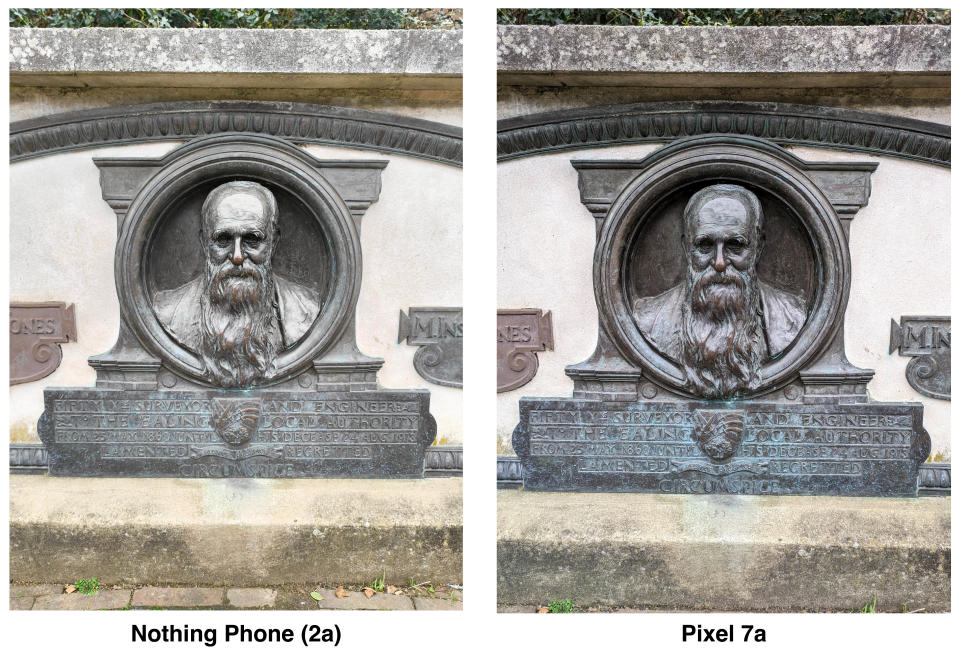
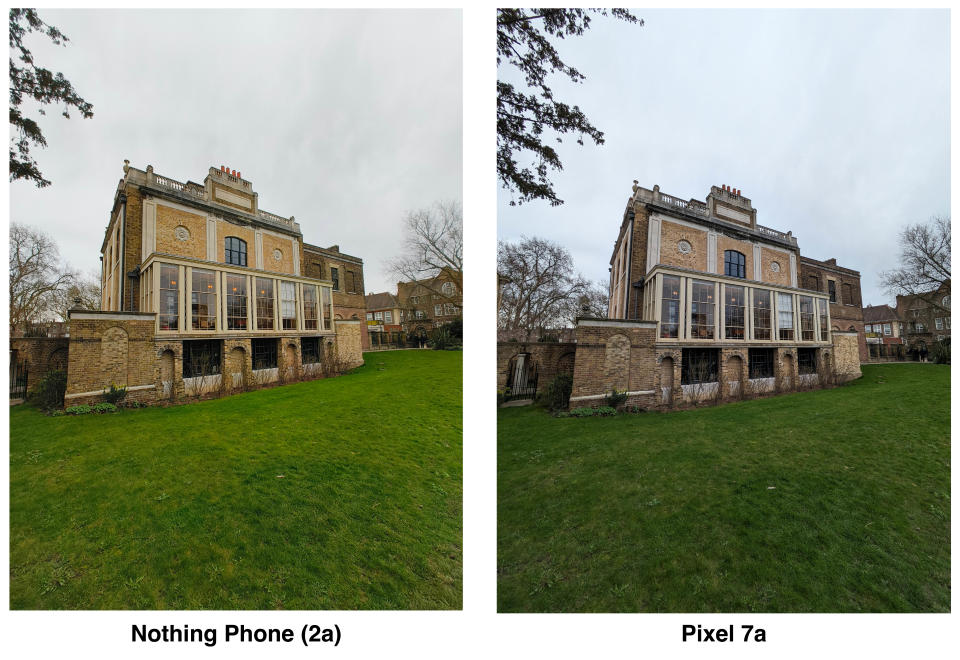
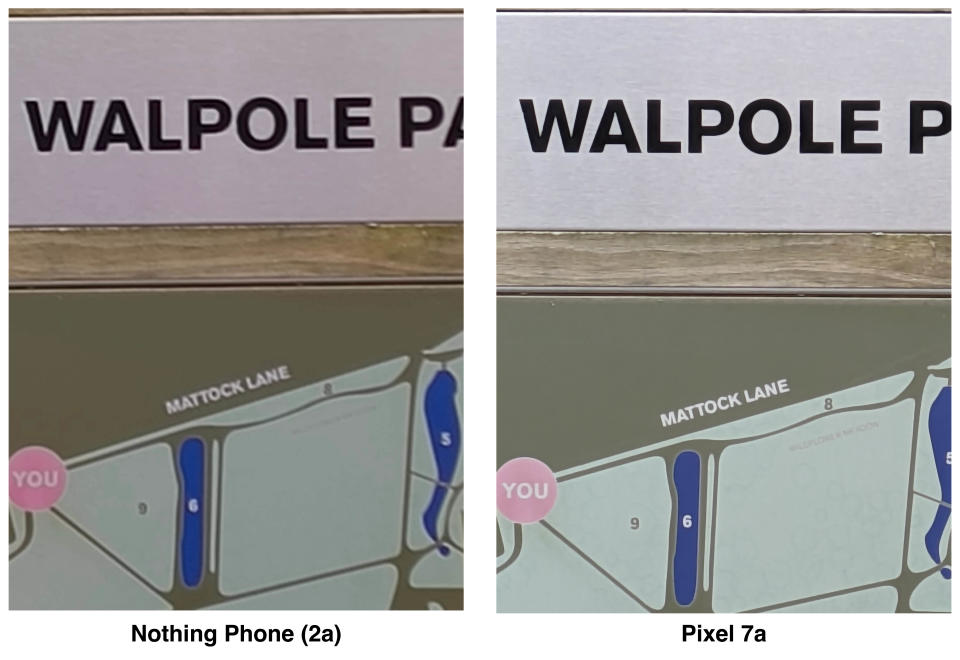
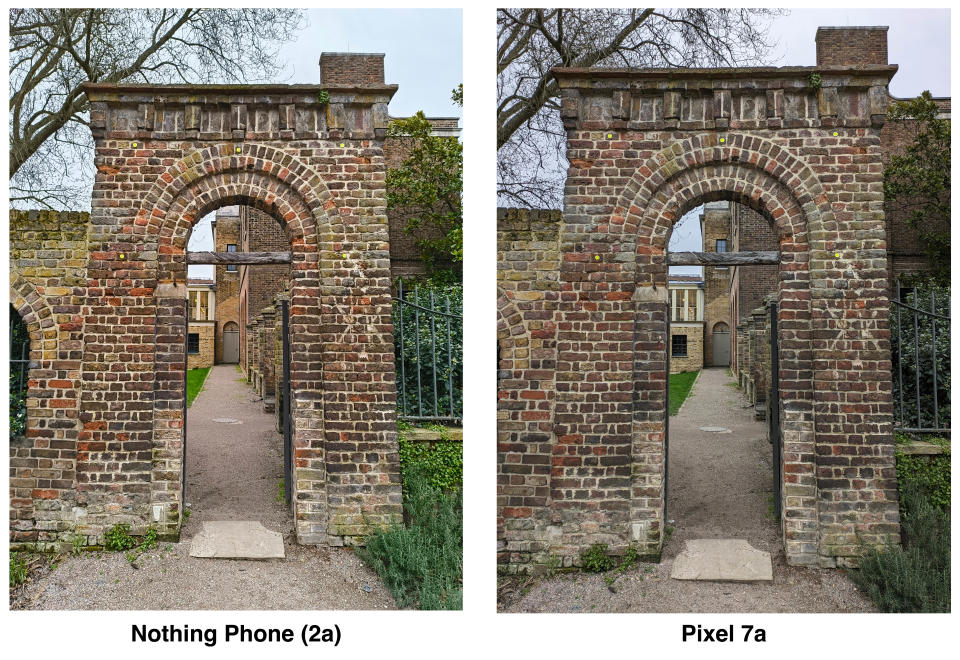
The other area the Phone (2a) misses the mark is zoom. While other manufacturers are including AI zoom on cameras that lack optical zoom, Nothing appears to have opted for a traditional digital zoom this time around, at least when compared to the Pixel 7a. If you can get closer to your subject, though, the Phone (2a) is quick to focus and usually takes a good-looking shot, especially in bright environments.
Backlit shots have a strong HDR effect that looks unrealistic, pulling too much detail out of both highlights and shadows to create a flat-looking image that misses out on nuance. This is better than cheaper phones with very poor dynamic range, but weaker than similarly priced phones like the Oppo Reno 10, let alone the Pixel 7a with more balanced back HDR processing.
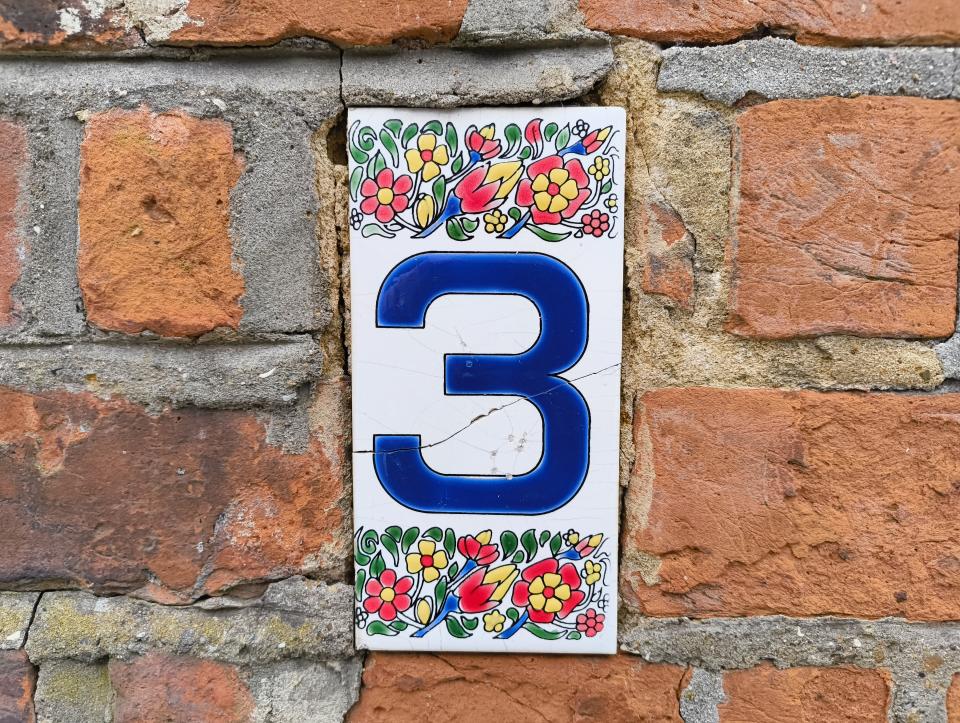
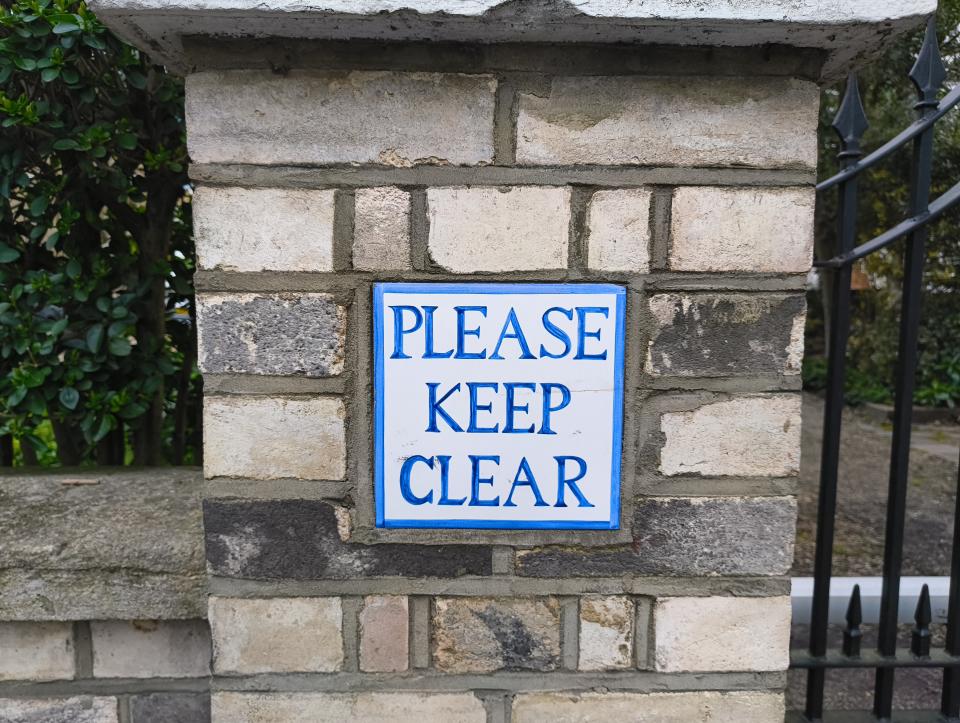
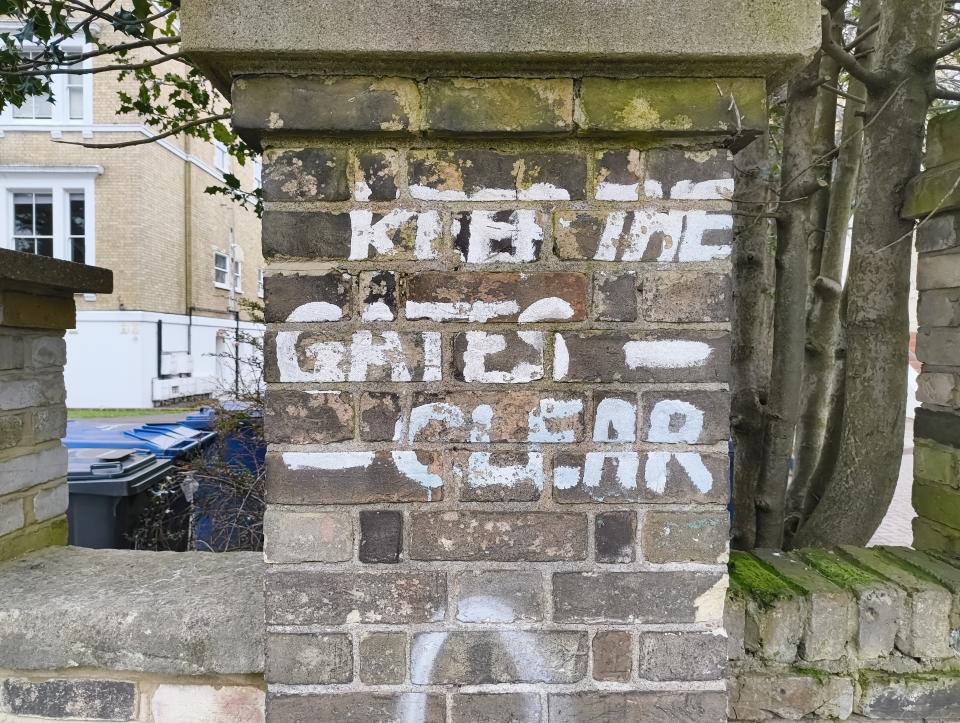
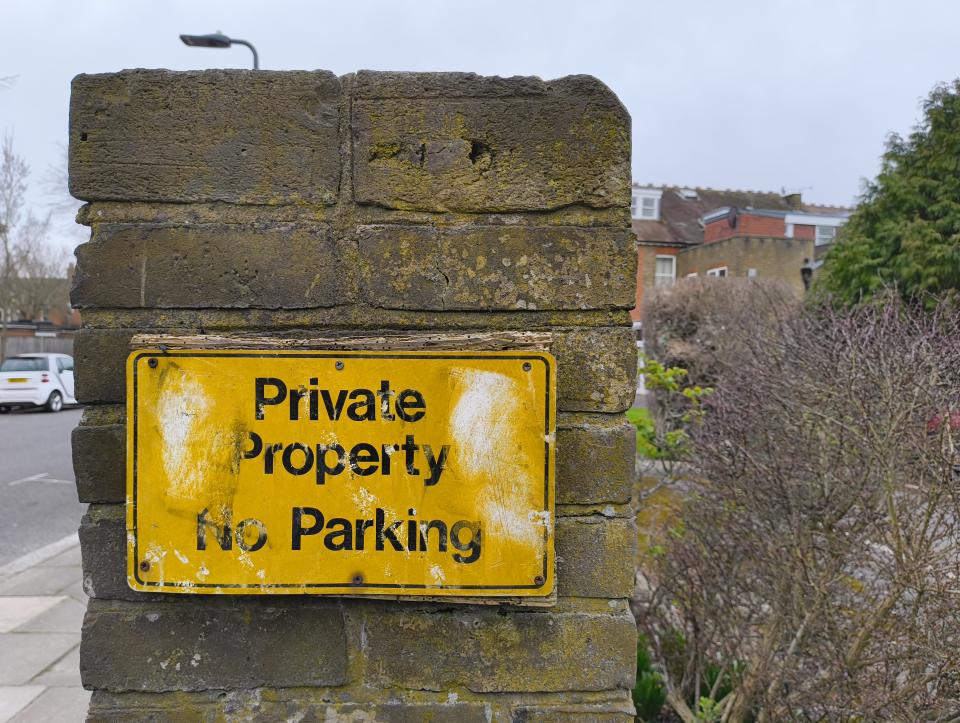
If you're coming from a nippy camera phone or a flagship, you might also be left waiting longer than you're used to for your Phone (2a) photo. Even in fairly good lighting, the Phone (2a) camera can be a bit of a waiting game, but if you're happy holding still, its shots are typically detailed across lighting conditions.
Where the Phone (2a) shines brightest is when capturing nearby subjects or objects. Its relatively large main sensor creates compelling depth, and the phone focuses as close as around 10cm for high-impact macro photography.
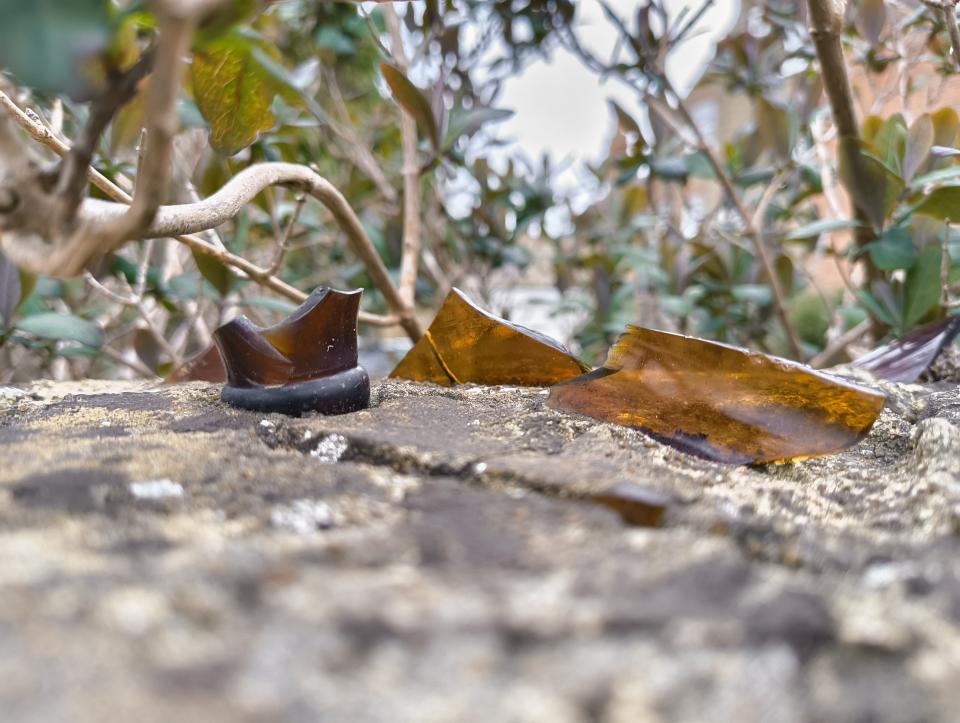

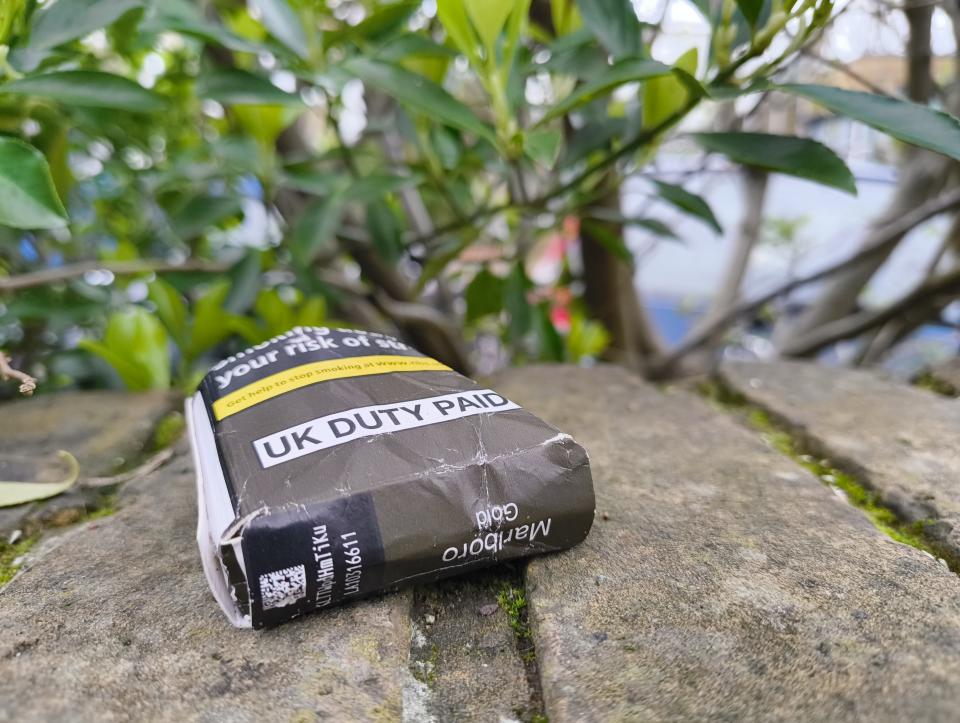
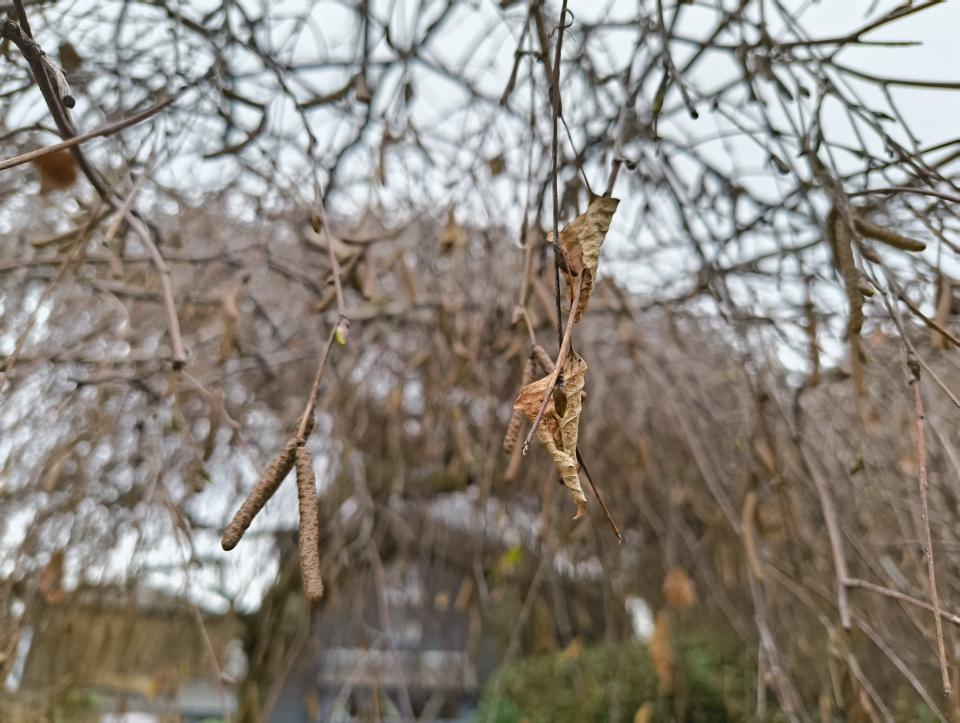

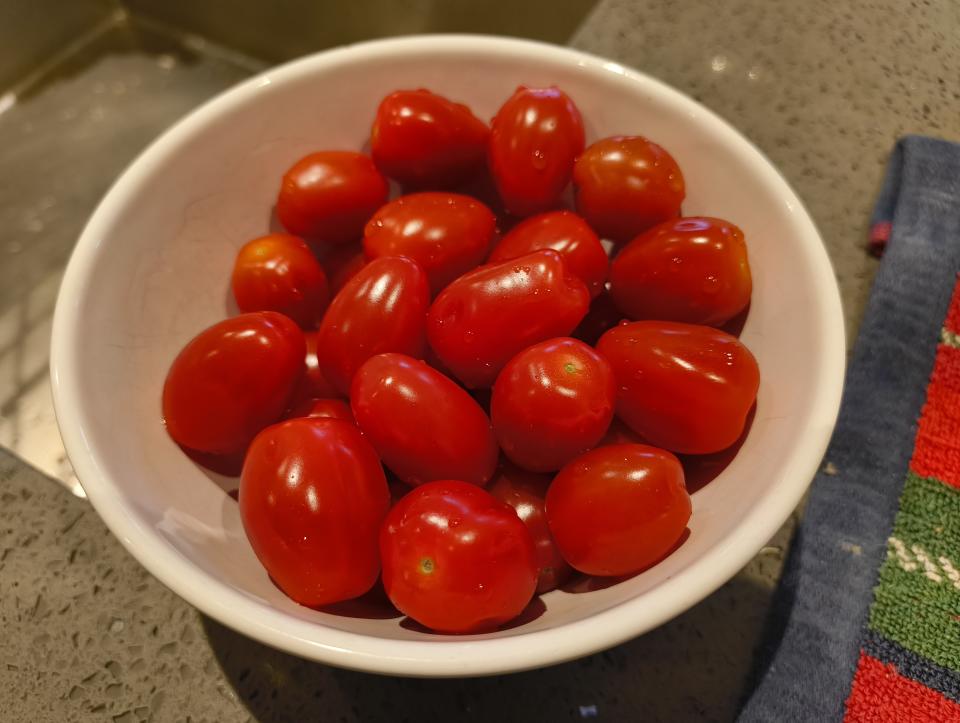
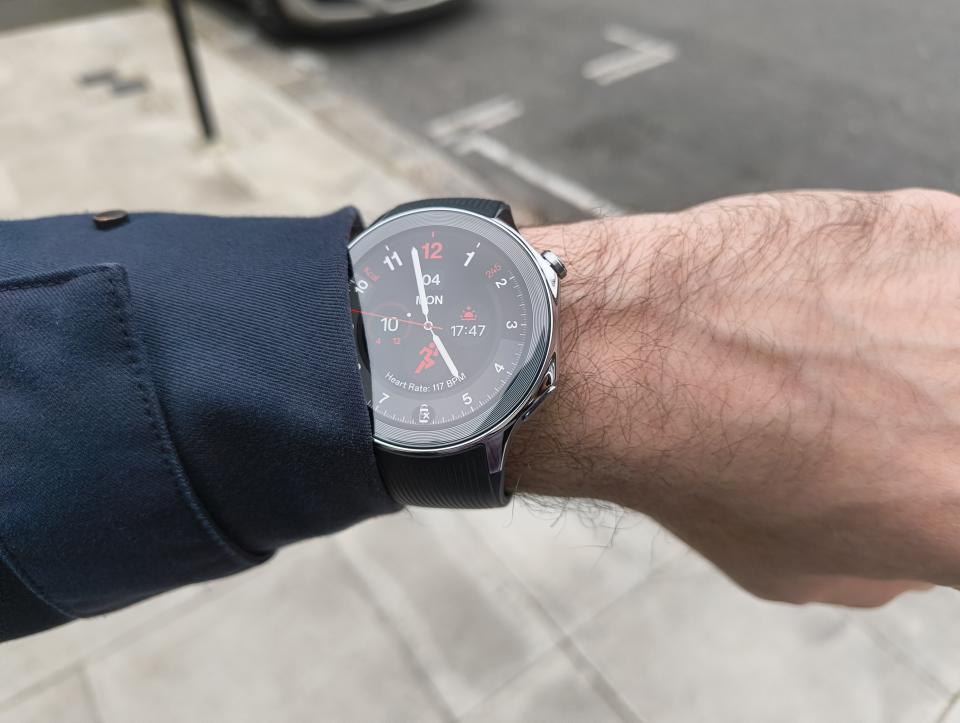
Nighttime photos look okay across both cameras, with plenty of night mode processing automatically applied to shots, which in turn extracts impressive detail from even dark scenes. On the one hand, this is great, as many phones the Phone (2a)'s price neglect the night mode on the ultra-wide camera. On the other hand, this drawn-out processing compounds the fact the Phone (2a) takes a while to snap a shot.
When you pick up this phone, you'd better get very comfortable with seeing the words "Hold phone steady" when taking photos.
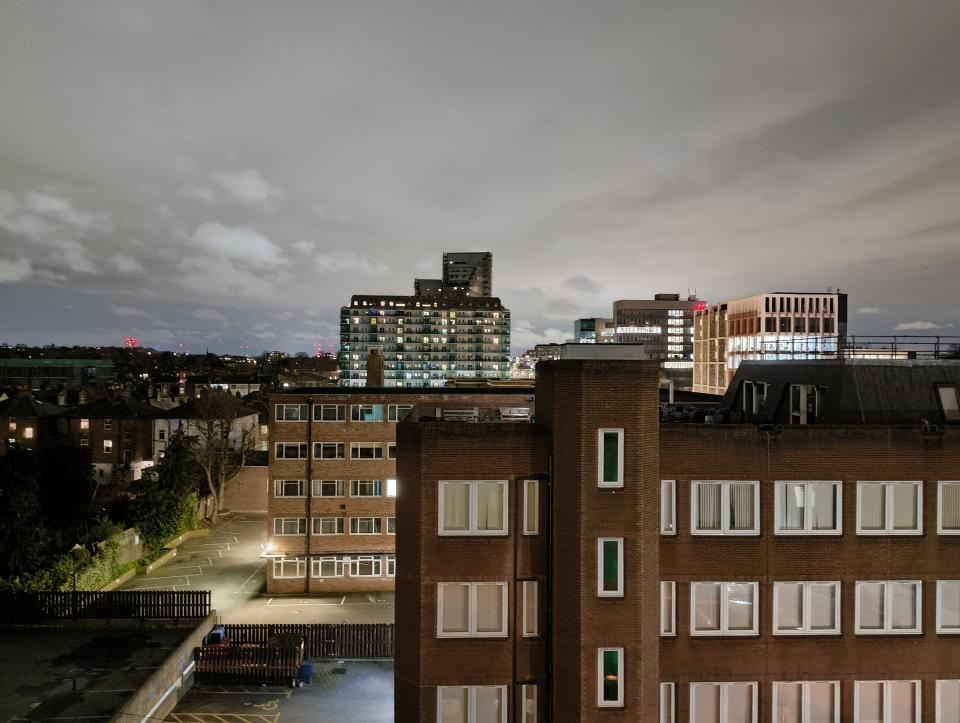
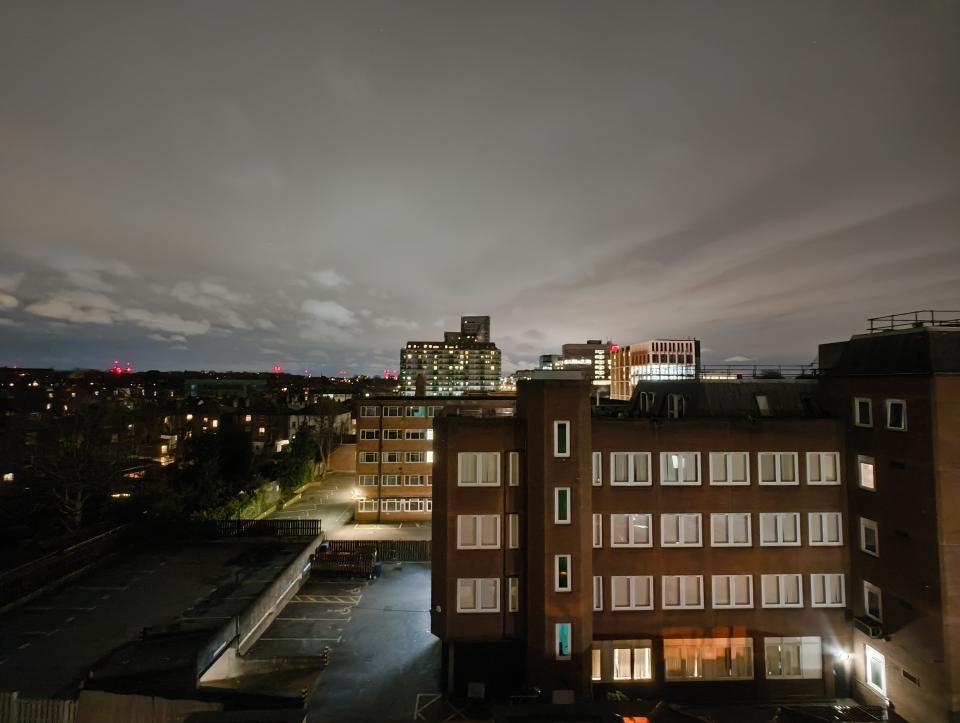
Video from the Phone (2a) looks relatively crisp. It's stabilised at up to 4K 30fps which is great, though the stabilization is a touch less consistent than the best around at the price.
Selfies showcase ample detail, particularly in bright environments, though can go in hard on the HDR-effect, resulting in unnatural-looking skin tones in shadow areas that have been brightened up.
Nothing Phone (2a) Additional Features
The highlight of the Nothing Phone (2a) experience in our time testing it out has been Nothing OS. The phone's UI is customisable, stylized, and feels cohesive set against the industrial design.
Running Android 14 with the promise of three years of Android updates and four years of security updates, futureproofing is competitive at the price, and shipping with either 128GB or 256GB storage, matched with up to 12GB RAM, memory options are Pixel-beating.
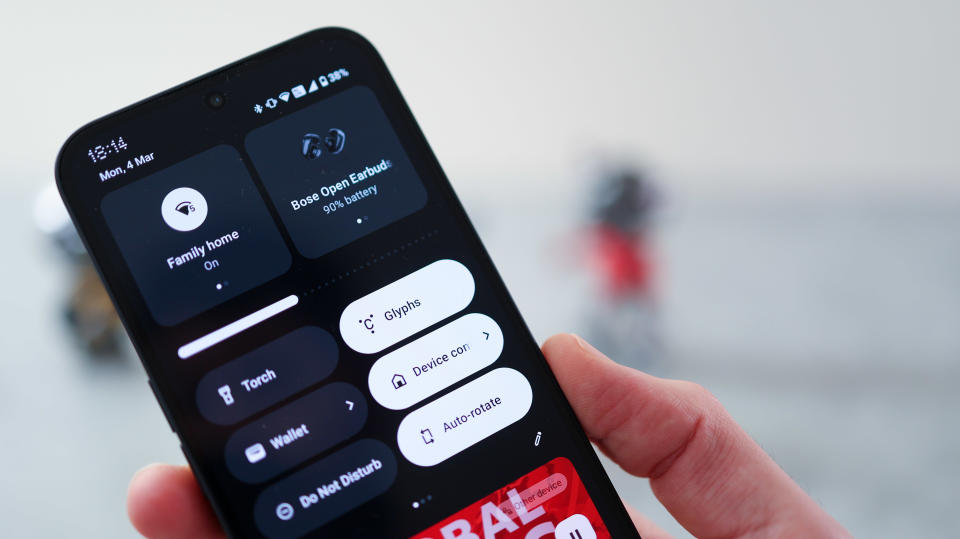
With stereo speakers, the Phone (2a) sounds immersive when watching or listening to content, and it's also better than expected when gaming. The MediaTek Dimensity 7200 Pro might only score a peak 1,152 score in 3D Mark Wild Life Extreme benchmark, but it was able to smoothly power through Genshin Impact at medium to high graphics settings without too many frames dropped and only occasional stutters.
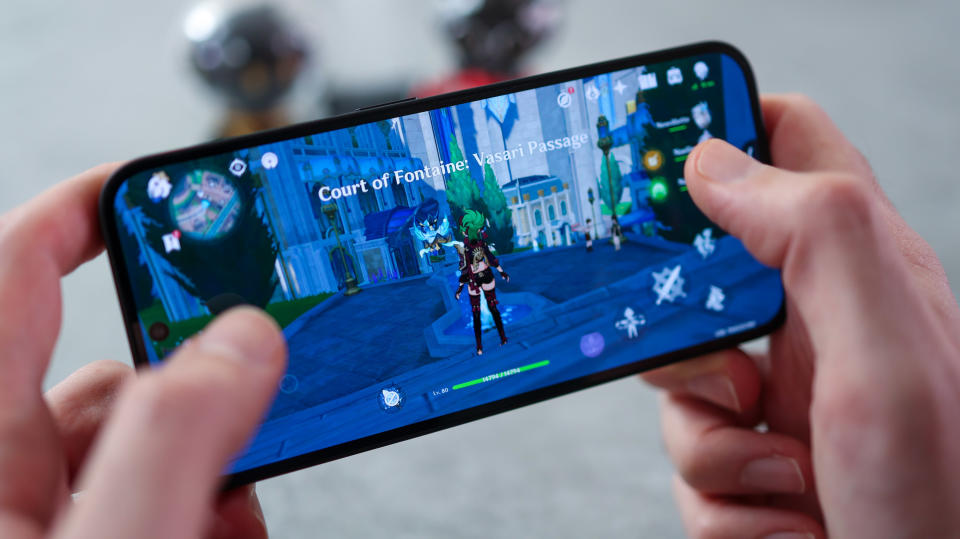
Thanks to a large 5000mAh battery and modest power needs, the Phone (2a) impresses with a comfortable one-day battery life, eking into two days if you're more sparing, and with 45W fast charging, you can charge the phone up fully in around an hour.
Nothing Phone (2a) Verdict
When we first tested the Nothing Phone (1), we were happy to see that the success of the phone didn't hinge on its glyph lights. They were fun, but solid features and a great price were its foundation, even if the interface and camera processing were a bit rough and ready. The Nothing Phone (2a) continues this greater-than-the-sum-of-its-parts narrative.
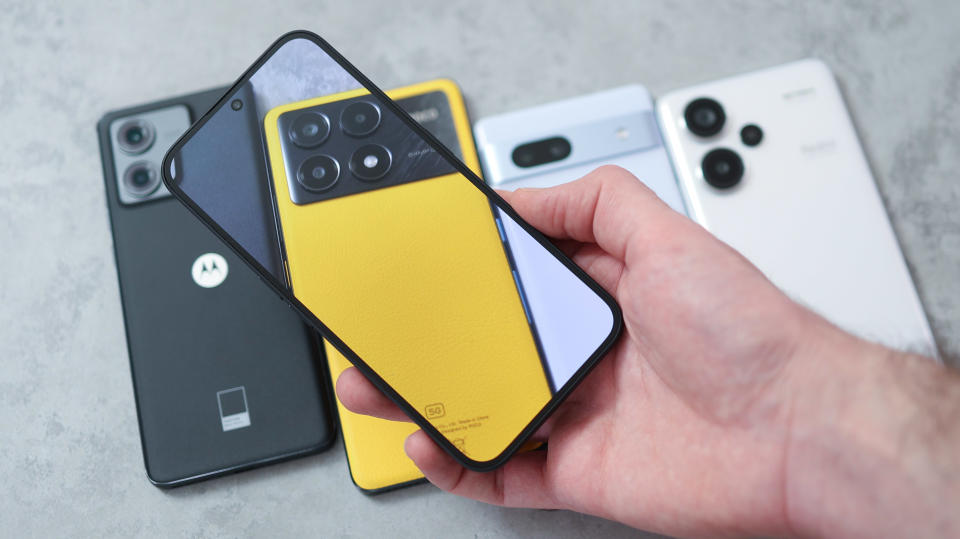
In isolation, no one feature of the Phone (2a) blew us away, but what we did get was greater cohesion between the phone's design and user interface than ever before, plenty of customization without compromising on the core Nothing aesthetic, and respectable performance, even when gaming.
The Phone (2a)'s main camera is good enough. It can take some high-impact close-up shots when the lighting is right, and day-to-day pictures are lively, but if photography and video are your priority, we'd suggest stumping up the extra for the Pixel 7a.
If, however, you want a long-lasting phone with plenty of storage and a charming, compelling experience, the Nothing Phone (2a) could scratch that itch like no other, and while it definitely isn't the best camera phone of 2024, it's one of the better options around at its price.

